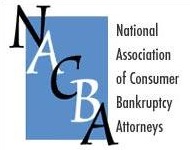 Just when you thought mortgage lender behavior couldn’t get more odious or indifferent, they prove you wrong.
Just when you thought mortgage lender behavior couldn’t get more odious or indifferent, they prove you wrong.
Yesterday a mortgage modification for clients currently in a confirmed Chapter 13 plan appeared on my desk. The plan is several years old and the mortgage arrears were about $5000. The lender sought relief from stay over what turned out to be a one payment delinquency and the bank’s posting error. Got that sorted out and here comes an apparently unsolicited loan modification from GMAC Mortgage.
The loan mod proposes to roll the defaults (which are now insignificant) into the loan balance, leave the term unchanged, lower the interest rate to 6% and fix it for the life of the loan. Any balance not paid in the remaining 25 year term is due at the conclusion. I calculated the balloon to be $12,000. OK. Monthly payment will be unchanged $3236.
Seems OK. Not a godsend for people managing to make the payments by and large.
Then on a lark, I went back to the note being modified and found that the adjustable rate will reset in September. I look up the LIBOR rate, add the premium as the note provides, and amortize the same balance over the same term at the adjusted rate. Care to guess? The resulting interest rate is a hair under 3% and the monthly payment will be $2100/month.
Now, let’s see: would I rather pay $2100 a month or $3236 a month for the same house?
I have to assume that GMAC figured the borrowers would be so happy to be offered a modification that they would not do the math. And, of course, the modification has them agreeing to the current principal balance and waiving any arguments that GMAC or its minions, up stream or down steam, don’t really own the note.
To be fair: the one benefit to the modification is that the 6% interest rate would be fixed under the modification. That may have some value if you think interest rates will zoom over 6% and the client expects to keep the house for the long term. But I doubt GMAC was trying to benefit the borrowers.
Have you seen such pranks in your practice?
Image courtesy freejay3.








Cathy, I haven’t caught anything as egregious as that in my practice, but I have heard of some really heinous behavior. A friend of mine used to be a VP in a major bank (almost everybody that works for a bank is a VP it seems). He told me about some of the predatory practices that they utilized as an institution. Unfortunately, not much you can really prove if you wanted to attack them for their behavior in court. For example, they would line up a series of documents on top of one another with only the signature lines exposed, and tell the individual that they are signing multiple copies of the same document. As you can imagine, there would be one that says something different and gives away the debtor’s rights. Makes it difficult to argue in court. Just goes to show you that all consumers need to be vigilant, and that as BK and Consumer attorneys, we must be more so.
We need to develop an intimate relationship with our calculators, so we can understand what these “deals” mean in dollars and cents, for a start. Even lawyers have to do arithmetic.
For clients that don’t qualify under HAMP, and “internal modification” such as this, may be the only viable option. Outside of HAMP, there aren’t any rules about what a lender can and can’t do. Ultimtely, it depends on how bad the homeowner wants the home. Certainly a waiver of future defenses is onerous, but a client with no money to really fight the claim (or worse, who has gone pro se and already had a judgment entered against tnem), may not really have many options.
I agree that short-term this is a bad deal, but interest rates fluctuate. They offered what’s on the table, and it’s your client’s decision to make; is the stability worth it, or do they want to play the float until their credit recovers post-discharge and in the anticipation that rates will only improve over time?
A balancing act to be sure, but I’m far less outraged.
I think what incensed me, and you’re right, I’m steamed, is that there are no disclosures required with this modification. No discussion of how much the balloon at the end might be and no comparision of now vs. modified terms. No invitation to understand the impact of these changes.